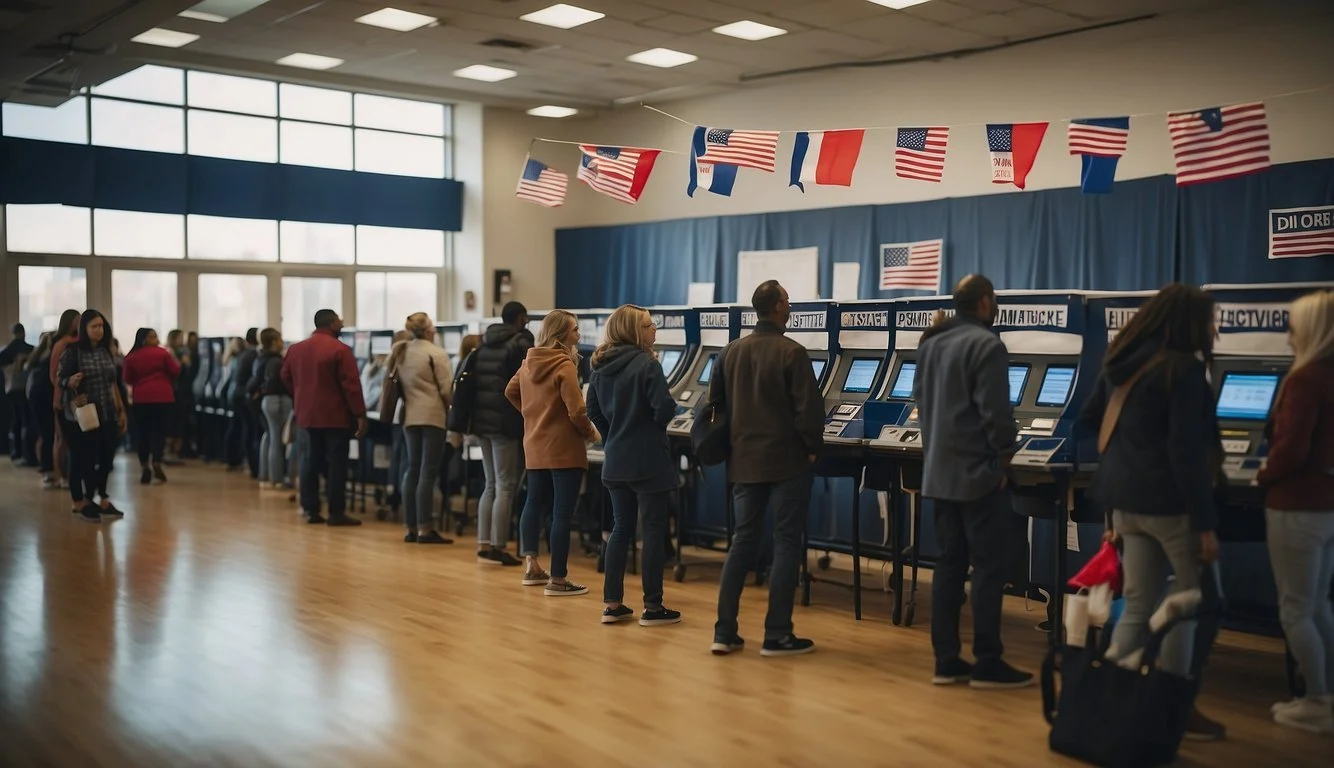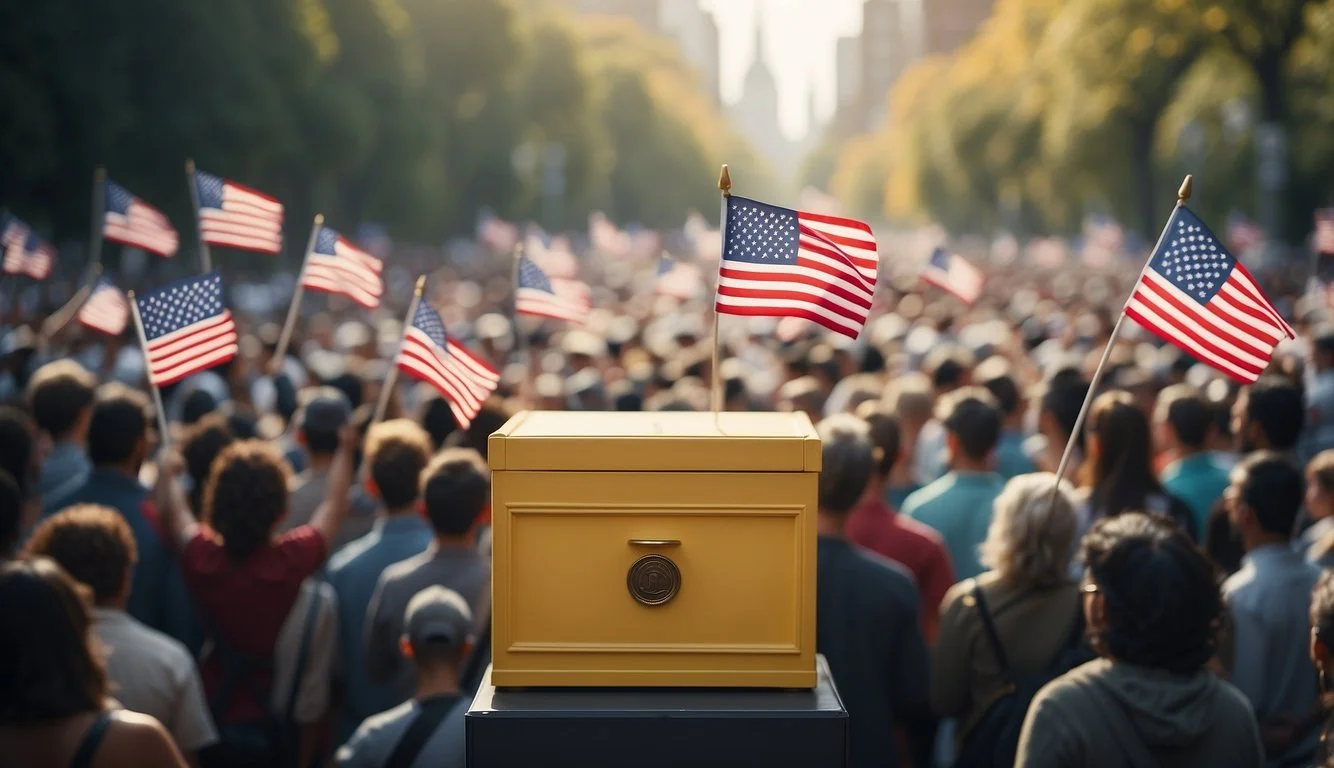Documentary Review: All In: The Fight for Democracy (2020)
A Deep Dive into Voting Rights
All In: The Fight for Democracy is a compelling documentary that addresses the critical issue of voter suppression in the United States. Directed by Lisa Cortés and Liz Garbus, the film draws attention to the barriers many Americans face when exercising their right to vote.
The documentary features prominent voices, including Stacey Abrams, who provide historical context and current examples of how voter suppression manifests in modern-day politics. It underscores the importance of understanding and combating these issues to preserve the integrity of democracy.
By highlighting real-life stories and expert insights, the film not only enlightens viewers but also motivates them to take action against voter disenfranchisement.
Context and Background
All In: The Fight for Democracy examines the historical context of voter suppression in the United States, highlighting the contributions of its filmmakers and the political environment of 2020.
Historical Significance
This documentary delves into the long history of voter suppression in America, dating back to the post-Civil War era. Following the 15th Amendment, Black men briefly gained the right to vote and even held political office. However, the implementation of tactics such as literacy tests and poll taxes quickly disenfranchised these voters. The film underscores how these barriers evolved over time, maintaining systemic inequalities. Modern-day voter suppression echoes past injustices, showing a pattern of tactics designed to limit the electoral power of marginalized communities, preserving the status quo.
The Filmmakers
Directed by Liz Garbus and Lisa Cortés, both prominent figures in the documentary film industry, All In: The Fight for Democracy benefits from their extensive experience and distinct perspectives. Garbus, known for her works like What Happened, Miss Simone?, brings a nuanced storytelling approach. Cortés, known for Precious, adds depth with her focus on sociopolitical themes. Their collaboration merges investigative journalism with personal narratives, making the documentary both informative and poignant. Stacey Abrams, a key figure in the 2018 Georgia gubernatorial race and a prominent advocate for voting rights, serves as both a subject and a producer, adding authenticity and immediacy to the film.
Political Landscape in 2020
The documentary situates itself within the politically charged environment of 2020. The U.S. presidential election was marked by intense partisanship and allegations of widespread voter suppression. Particularly in battleground states like Georgia, which the film closely examines, voter registration purges and restrictive ID laws raised significant concerns. The Black Lives Matter movement, reignited by incidents of police violence, brought additional focus to systemic racism, including within electoral systems. The COVID-19 pandemic further complicated the election process, with debates over mail-in voting and accessibility dominating headlines. This context provides a backdrop of heightened urgency, emphasizing the documentary’s relevance and the ongoing fight for democratic integrity.
Synopsis of the Documentary
The documentary "All In: The Fight for Democracy" examines the persistent issue of voter suppression in the United States, using the 2018 Georgia governor's race as a focal point. It documents historic and modern obstacles to voting rights.
Key Themes Explored
The documentary highlights voter suppression tactics throughout American history, such as literary tests and poll taxes. It draws a parallel between past and present barriers. Modern practices include strict ID laws and voter roll purges. These modern tactics, the film argues, disproportionately affect minority communities.
Another theme is the activism against voter suppression. It portrays efforts to combat these injustices, featuring grassroots organizations.
Main Figures
Stacey Abrams is a central figure. Her 2018 gubernatorial campaign and the subsequent fight against alleged voter suppression are pivotal.
Other significant figures include Ari Berman and David Pepper, who provide expert commentary on voter suppression laws.
Prominent activists and legal experts such as Debo Adegbile also contribute, offering their perspectives on the ongoing battle for voting rights.
Critical Analysis
"All In: The Fight for Democracy" provides a poignant examination of voter suppression in the United States, guided by Stacey Abrams' insights. The documentary uses compelling narratives, striking visuals, and a well-curated soundtrack to engage viewers deeply with the subject matter.
Narrative and Pacing
The documentary meticulously traces the history and evolution of voter suppression in the U.S. through a series of well-structured narratives. It starts with historical context, covering early forms of disenfranchisement, and gradually shifts to contemporary issues. Each story builds upon the last, creating a coherent and engaging timeline. The pacing is deliberate, ensuring critical details are not overlooked, though at times it risks feeling repetitive.
Cinematography and Visuals
With striking visuals, the film effectively contrasts historical footage with contemporary scenes. Archival footage is seamlessly weaved with present-day interviews, using a mix of black-and-white and color imagery to emphasize different eras. The choice of visual aids, such as maps and documents, enhances the storytelling. Cinematography plays a crucial role here, emphasizing both personal stories and broader social impacts.
Soundtrack and Audio
A thoughtfully curated soundtrack underpins the documentary, enhancing its emotional depth. Music is used sparingly, allowing spoken narratives to dominate when necessary. Background scores subtly amplify tension during critical moments, while interviews and voice-overs are clear and crisp. This effective use of audio engages the audience, reinforcing the documentary's thematic elements without overwhelming the viewer.
Editorial Standpoints
The film does not shy away from its political stance. It positions itself firmly against voter suppression, advocating for extensive voting rights reform. This perspective is evident through the selection of interviewees and the framing of historical and current events. While some might see this as a potential bias, it aligns with the documentary's aim to raise awareness and drive action. The editorial choices support a persuasive narrative aimed at educating and mobilizing viewers.
Cultural and Social Impact
"All In: The Fight for Democracy" serves as a potent documentary that highlights crucial aspects of voter suppression and its historical context. Its impact spans from influencing public opinion to stirring discourse around voter rights.
Public Reception
The documentary has been well-received by both critics and the general public. Reviews praise its timely and absorbing examination of voter suppression. Critics from Variety and Roger Ebert's site commend its powerful narrative and engaging presentation.
Many viewers find the film enlightening, bringing attention to the ongoing challenges in the electoral process. The emphasis on Stacey Abrams's efforts adds a personal and relatable dimension, resonating with many audiences.
Influence on Voter Rights Discourse
"All In: The Fight for Democracy" has significantly contributed to the conversation around voter rights. By detailing the history and modern iterations of voter suppression, it educates and mobilizes audiences.
The film's release coincided with heightened awareness and activism around voting issues. It has been cited in discussions and debates, influencing policymakers and advocates. The documentary's focus on the 2018 Georgia gubernatorial race underscores the real-world implications of voter suppression practices.
Comparisons to Other Works
"All In: The Fight for Democracy" stands out in its detailed exploration of voter suppression, but it also shares common ground with other documentaries in its genre. Key aspects to consider include how it aligns with similar films and its historical accuracy.
Similar Documentaries in Genre
Several documentaries cover themes similar to "All In: The Fight for Democracy," notably those focusing on civil rights and electoral integrity. For instance, "13th" by Ava DuVernay examines mass incarceration's ties to racial inequality.
Both films use archival footage to highlight ongoing systemic issues. Another relevant documentary is "Recount," which offers a deep dive into the controversial 2000 U.S. Presidential election. These films similarly provide critical insight into the mechanics of American democracy, though each with a unique focus.
Historical Accuracy Comparison
"All In: The Fight for Democracy" portrays historical events and policies, such as Jim Crow laws and modern-day voter ID legislation, with high accuracy. It meticulously covers the history of voting rights, echoing the rigorous fact-checking seen in films like "Selma."
The documentary successfully balances historical footage with expert interviews, which ensures viewers receive a thorough understanding of voter suppression. Comparatively, documentaries like "Eyes on the Prize" also maintain high historical integrity, focusing on the civil rights movement. Both films employ a structured narrative to present factual details effectively.
Personal Reflection
This documentary provides deep insights into the modern state of voter suppression, drawing on both historical context and personal narratives.
Personal Takeaways
The documentary, All In: The Fight for Democracy, uncovers how voter suppression has evolved from blatant methods to more subtle, pervasive tactics.
It eloquently portrays the persistence of these issues through Stacey Abrams' personal experiences and historical facts.
Many viewers might feel a profound sense of urgency after watching. The film effectively highlights the ongoing struggle for social justice and the importance of remaining vigilant and informed. By examining personal stories, it underscores the human impact of political decisions on marginalized communities.
Broader Implications
All In: The Fight for Democracy might serve as a wakeup call, urging viewers to recognize the continuous fight for voting rights.
The documentary’s detailed analysis of modern voter suppression mechanisms, such as gerrymandering and voter ID laws, suggests the critical need for legal and social reforms.
By illuminating these broader issues, the film calls for collective action and political engagement. The narrative shows that the fight for democracy is not only a legal battle but also a moral one that requires the participation of every citizen.
Conclusion
"All In: The Fight for Democracy" presents a compelling examination of voter suppression in the United States. The documentary highlights historical and contemporary challenges to voting rights, showcasing how these barriers persist in modern times.
Stacey Abrams serves as a central figure, offering firsthand insights into her experiences during the 2018 Georgia governor's race. Her narrative underscores the film's broader themes, emphasizing the systemic obstacles faced by voters.
Directed by Liz Garbus and Lisa Cortés, the film combines historical footage with modern-day interviews. This approach provides a comprehensive view of the issue at hand.
Throughout its runtime, the documentary remains focused and purposeful. It aims to educate and inspire viewers to recognize the importance of fair and accessible voting systems.
Despite its targeted message, the film avoids becoming overly partisan. It underscores the core democratic value that voting should be free and accessible for all.
In summary, "All In: The Fight for Democracy" is a well-crafted documentary. It offers a detailed look at the ongoing struggle for voting rights in America.
This documentary is particularly relevant today. It urges viewers to reflect on the state of democracy and the ongoing efforts needed to ensure equal voting rights for everyone.




